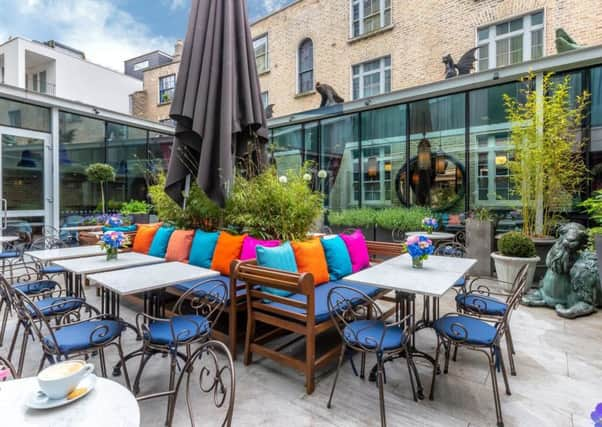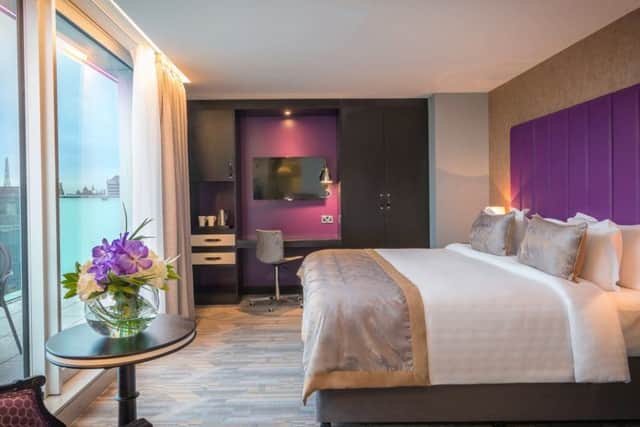The Dublin the locals know


Ok, so you’ve visited Dublin many times, maybe taken in a show, visited the tourist traps or done a few pubs after an international rugby match?
But have you ever seen Dublin through the eyes of the culture vultures and foodie cognoscenti, with an informed guide walking you through the best eateries and coolest spots that only the locals know?
Advertisement
Hide AdAdvertisement
Hide AdWelcome to ‘Dublin 2’, the creative quarter and Temple Bar area, a centre of flair in cafes, pop-up restaurants, street eateries, jewellery and fashion.


We checked in to the chic Trinity City Hotel on a Friday night to take in a tour with Fab Food Trails the next day, and were certainly impressed. Located on Pearse Street right beside Trinity College in the heart of Dublin city, it made the perfect base for the tour, with quirky and fascinating décor and superbly stylish and comfy rooms to retreat to after a day’s exploration.
After unpacking, we progressed to the veranda, mixing with guests from all over the island. The atmosphere was relaxed and friendly and boded well for dinner in the Courtyard Restaurant, which included ham hock, blackberry sorbet, and a variety of cheeses and enjoyable wines.
Of particular note was the delicious freshly baked bread, the creme brulee and the sirloin. The craic was good with a friendly and cosmopolitan mix of guests.
Advertisement
Hide AdAdvertisement
Hide AdAfter a very comfortable night, the breakfast was also top class, albeit, for once you are recommended not to try everything as one is typically tempted to, leaving room for the gourmet tour ahead.
Our guide for the day was likeable foodie historian and former chef Chris Binchy. Starting in the heart of Trinity University campus, he gave a fascinating talk on the evolution of Irish cuisine.
Our parents and their parents, he noted, would have enjoyed a pretty nutriotious but plain diet which varied little from week to week.
Originally dominated by dairy produce, as Irish society was organised around cattle, the arrival of the French Normans in the 12th century brought a different type of agriculture and cultivation of crops.
Advertisement
Hide AdAdvertisement
Hide AdDairy products, oats, fruit and root vegetables, cabbage, bacon, eggs and chicken were later added to with scones, tarts and pastries.
With the advent of cheap air travel in the 1990s, however, came easy access to the cuisine of France and Italy and a real revolution began; the strengths of top quality Irish ingredients then began to be married to the Latin flair and creativity, giving what is today the 21st century foodie haunts across the city. Consequently, our first stop was a dedicated cheese shop, Sheridans, where we were entertained and informed by a true French man, who took care to extol the virtues of a wide range of new Irish cheeses made in the French style, all of which were passed around with crackers to sample.
Next up was Powerscourt Shopping Centre, what was traditionally a wide open quadrangle in the centre of classic four storey Georgian buildings, but has been transformed into a charming indoor shopping complex, the central feature of which is the glass roof.
A centre of all things ‘design’, we were treated to scones and cream from the Pepper Pot, which has a pedigree in custom baked breads and bagels, with a cult following among locals. They serve six different breads, all baked daily, which form the centre of all their dishes. Who knew Irish cream is different to English cream - clotted and not whipped with no sugar; it is delicious enough without anything added, we were informed.
Advertisement
Hide AdAdvertisement
Hide AdNext up was the Loose Canon, deliberately named after a colourful cleric.
Specialising in natural cheeses, which were delicious, we also sampled a range of delicate parma-style hams, some of which were produced at Ballycastle and have a revered following in Dublin on account of the quality produce.
For a change of pace we then popped into a traditional Victorian pub, the Swann, however this was a pub with a difference. It is ‘the’ rugby pub of Dublin, traditionally favoured by touring players the night before games - in the amateur era at least. It was run by legendary Ireland and Lions prop, Sean Lynch. Now run by his son Ronan, Sean still pulls the odd pint behind the bar and the rugby memorabilia on the walls is worth studying.
This was followed by a trip to George’s street arcade, filled with ‘boho’ stalls and second hand bookshops, where we stopped at Lolly and Cooks for ‘Savage Rolls’; in Dublin the word ‘savage’ means ‘great’ and boy did these sausage rolls deserve the label. As big as your fist, they were as delicious as the meat loaf my mother used to make. Our last stop was the Temple Bar food market, which is even a hidden gem even to many Dubliners. As you enter, you may hear passionate yells from the acting school a few floors up, while a kaleidoscope of smells invade your senses.
Advertisement
Hide AdAdvertisement
Hide AdFirst up we tried the fresh oysters and the Temple Oyster Bar - surprisingly delicious. After that we moved onto the Market Kitchen, a food stall with a difference; their menu on any morning depends on what all the speciality stalls around them are selling that day. We had sourdough with tahini and pumpkin puree, kale and chilli - out of this world! An interesting and worthwhile tour for visiting friends or family, stag and hen weekends or business trips.
* Including overnight accommodation with breakfast and a Fab Food Trail, prices start from £229 per room based on two people sharing. See www.trinitycityhotel.com